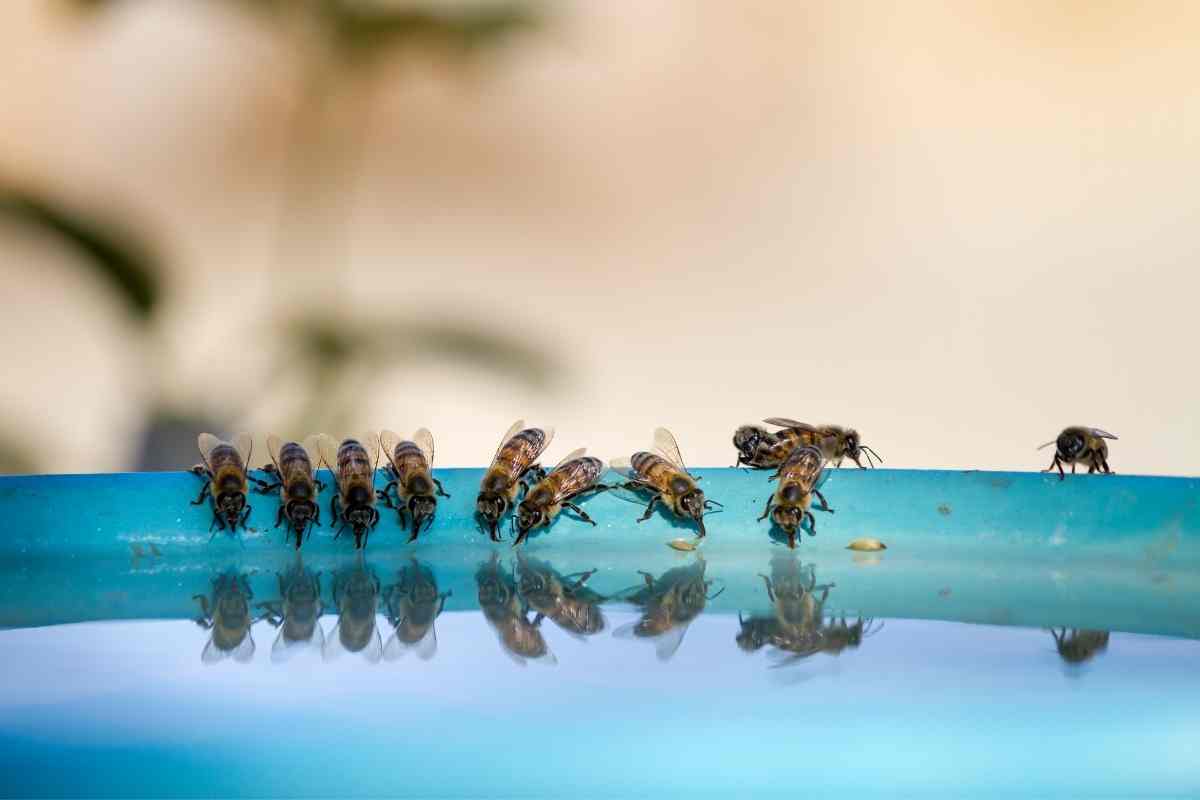If you are considerate of the environment and living creatures, you may be looking for simple ways to welcome animals and insects to your garden.
Have you considered the hardworking bees that you may have seen by your pool or enjoying the riches of your flowers?
Bees are faithful pollinators who keep your garden flourishing and fruitful, year after year.
If you are looking for a way to help and encourage bees to thrive, providing a water station for them will provide them with an accessible source of much-needed hydration.
Keep reading for a step-by-step guide to how to make a bee water station.
Do Bees Drink Water?
Believe it or not, despite being insects, bees need a substantial amount of water all year round.
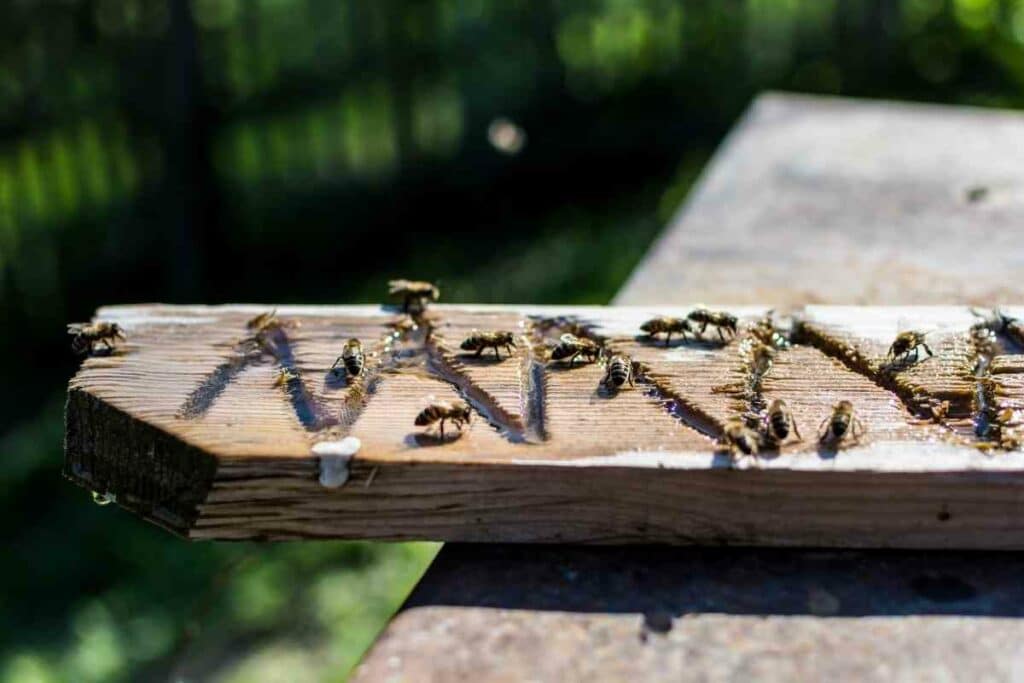
All bee species will drink water and have a variety of species-specific activities they use water for.
In the summer months, when suitable water sources are scarce, this makes providing a water station all the more important.
What Do Bees Use Water For?
Bees drink plenty of water but they also consume and use water for other purposes.
- For example, in the winter, bees tend to use water to dissolve crystallized honey.
- They also use water as a ‘honey thinner’ for honey that has become too thick and tough
- In the summer, they spread water droplets along the brood comb and fan the brood comb with their wings. This intense rapid fanning encourages the water to evaporate allowing their nests to gain the right temperature to aid them with raising their babies.
What Water Is Suitable for the Bees in My Garden?
- The water that you provide needs to be a large enough volume not to evaporate during hot weather.
- Water that is too steep which may cause the bees to drown; finally, the water also needs to be purely for the bees alone (they cannot share it with any livestock or cats and dogs).
- Honey bees do enjoy a nice cool salt water pool.
Water Is One of the Four Crucial Things Bees Collect
Depending on what the hive needs, bees collect:
- nectar
- pollen
- propolis
- or water
They carry collected pollen and propolis in pollen baskets on the bees’ hind legs, whereas they carry internally water and nectar in the crop.
Most of the time, a bee will collect the same thing all day, going back and forth.
So once a water-carrying bee transfers its load of water to a house bee, it will go back to the same source and fill its crop again.
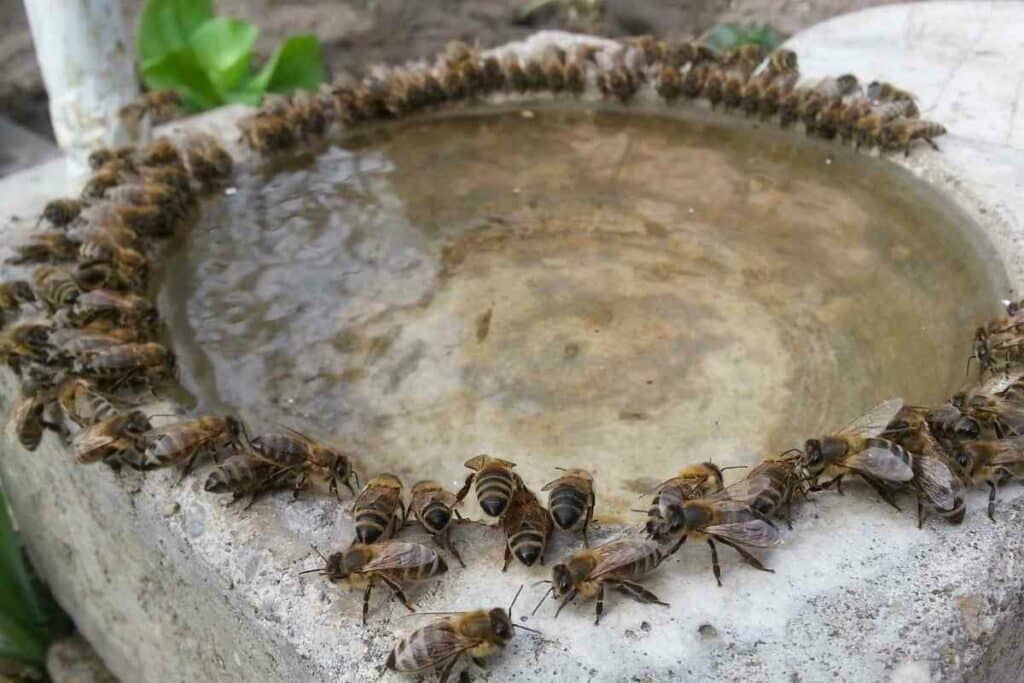
However, sometimes a forager can’t find a house bee willing to accept its load of water.
If that happens, it knows the colony now has all the water it needs, so it forages for something else instead.
Like Butterflies, Bees Do Mud Puddle!
Bees often choose water that might disgust the rest of us!
They may choose ditch water, slimy flower pots, muddy mole holes, or a pile of wet leaves.
Unfortunately, these busy bees are also attracted to the smell of salt and chlorine, which are frequently added to swimming pools.
While it seems logical to supply sparkling clean water for your bees, they will probably ignore it.
Want to know more about the mud puddling of insects? Why not read the article “Do butterflies drink blood?”
How to Make the Ideal Bee Water Station That Bees Will Visit Again and Again
1. Think Like a Bee
When deciding on the best water sources for bees, it helps to think like one!
Although every bee has five eyes, bees attune their eyes to detect motion and changes in light levels, not the detail we are accustomed to seeing.
Travelling high and fast, they may easily overlook potential water sources.
2. Appeal to Their Sense of Smell!
Biologists believe that bees probably find most of their water by scent rather than sight, so a water source with a smell will be more attractive.
Water that smells like wet earth, moss, aquatic plants, worms, decomposition, or even chlorine, has a better chance of attracting a bee than sparkling water straight from the tap.
Smelly or slimy water sources have the advantage of containing a wide range of nutrients as well.
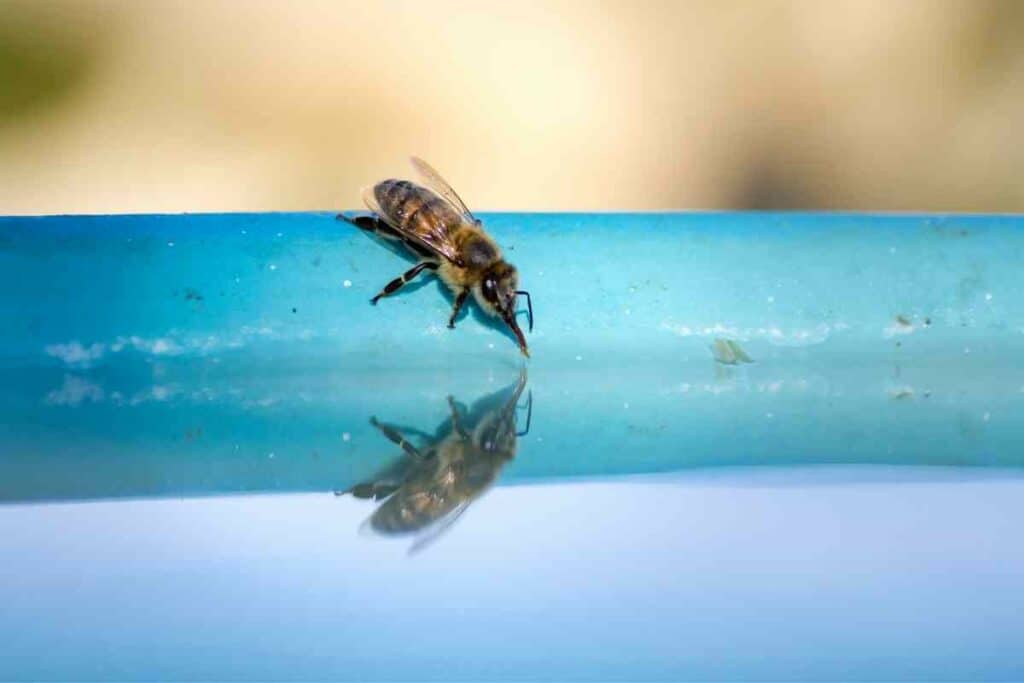
Although a bee gets most of its nutrients from nectar and pollen, some water sources are rich in vitamins and micronutrients that can boost honey bee nutrition.
3. Safety First for Your Bee Water Station
The other thing bees like is a safe place to stand.
Water in a steep-sided container or water that flows quickly is dangerous to a bee because they can easily drown.
To solve this problem, beekeepers have devised all kinds of bee watering stations:
- A saucer filled with marbles or stones makes an excellent DIY watering station for bees. Equally good is a bucket of water with plenty of “bee rafts.” These can be corks, sticks, sponges, or packing peanuts — anything that floats!
- If you are a gardener, you may have a hose with a slow leak or a drippy irrigation head that can be moved to a convenient location and allowed to seep into the ground.
- Other gardeners owners use hummingbird feeders filled with water or small ponds with lily pads.
- Alternative shallow containers include pie dishes or cake tins from your kitchen or even a frisbee.
4. Luring Bees to Your Watering Station
When first establishing a water source, it can help to add chlorine to it:
- A teaspoon of chlorine bleach in a bucket of water may be enough to attract the bees’ attention.
- Add a handful of ground oyster shells to a pie dish filled with water – this gives the water source a salty ocean smell the bees absolutely love.
- Another alternative is hay.
- You can also use a weak sugar solution in a bee waterer. Once the bees find it, they will empty it quickly and come back for more.
When luring the bees with chlorine, salt, or sugar, you can stop adding these ingredients as soon as the bees become used to the water source.
After a few days, they will “forget” what was there and simply think of it as water.
Works Best: The most important thing is to establish a pattern early, as soon as your bees arrive before they develop bad habits.
Despite Your Best Efforts Bees May Reject Your Water Station
Honey bees can be stubborn and prefer your neighbour’s pet bowl, potted plants, birdbath, or even wet laundry on the line rather than your new water station.

Bees are creatures of habit and once they find a reliable source, they will return again and again.
Since getting your bees to change their source is nearly impossible, it is best to establish a source for them and wait for some to find it by themselves.
Providing Water Will Help Bees When Water Is Scarce
Unlike humans, bees can travel very long distances to find the resources they need.
Normally, a colony forages within a few miles from home. However, in times of stress or limited resources, a bee may travel five miles to get what it needs.
Providing new water sources will shorten the foraging journeys of your local bees.
And When They Find Your Water, Bees Will Share the Good News!
However, the bees’ system of communicating the location of resources — the dance language — works best for things that are not too close to the hive.
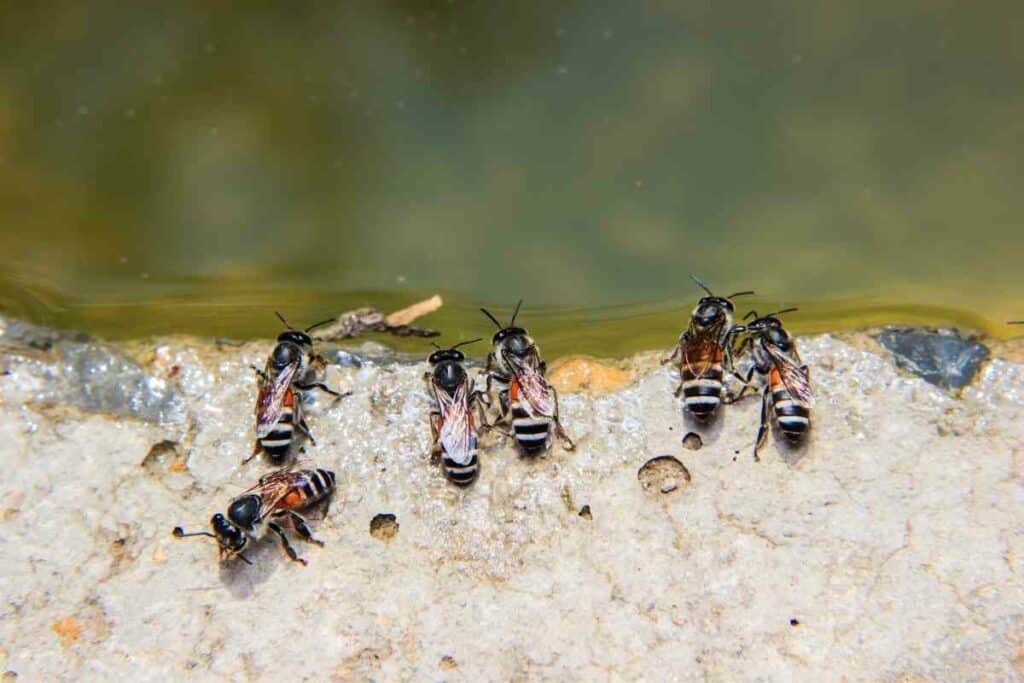
For things just a few feet away, a bee can say the source is close, but they may have trouble explaining exactly where it is.
If the water is a bit further away, they can indicate a direction. So for best results, have the bee waterer a short flight from the hive (around 100 feet).
Rounding Up
A bee water station is a great family project for your garden and will be welcomed by local thirsty bees in time.
You may find your bee water station also attracts butterflies and other insects that take the opportunity in the summer months.
On the hottest days, you’ll enjoy the site of your new visitors getting a well-earned cool drink!
